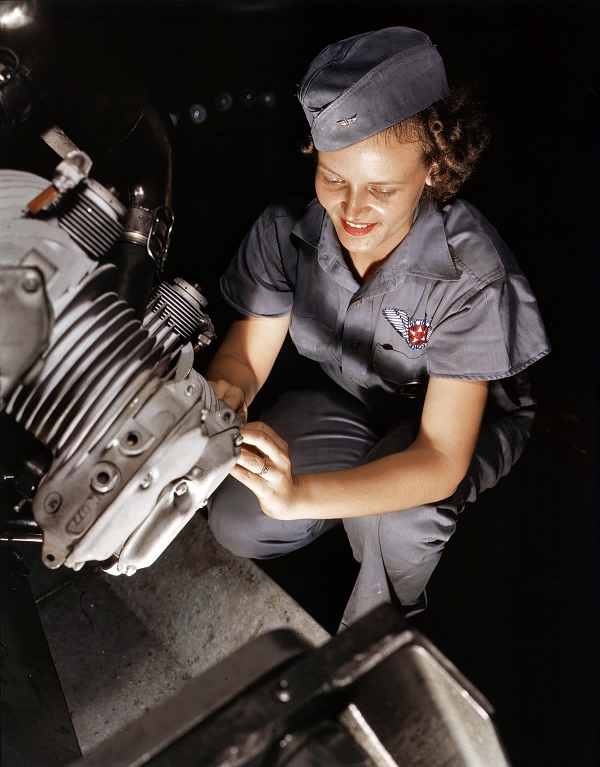 |

| ||
|---|---|---|---|
| |
| ||
 |
|||
| In 1927 the three best radial engines were: | ||||
| • | The Wright Whirwind. | |||
| • | The Armstrong-Siddeley Jaguar. | |||
| • | The Pratt & Whitney R-1340 Wasp. | |||
| By 1936, the single-row Whirlwind engines were produced with either five, seven or nine cylinder and had been under development for over 16 years. The ratings of the three engine types were: | ||||
| In 1927 the three best radial engines were: | ||||
| • | Five-cylinder 175 hp. | |||
| • | Seven-cylinder 235 hp, 250 hp, 285 hp, and 320-350 hp. | |||
| • | Nine-cylinder Whirlwinds of 330 hp, 365 hp, and "Deluxe equipped" 420-450 hp. | |||
| The Whirlwinds were built with many standard and special features which included: | ||||
| • | An engine driven fuel pump. | |||
| • | Three-way vacuum pump drive. | |||
| • | Automatic valve gear lubrication. | |||
| • | Constant speed propeller governor. | |||
| • | Cabin heating or cooling ventilation. | |||
| • | Two-position propeller hydro-controler. | |||
| • | Dynamic crankshaft damper counterweight. | |||
| • | New type of nose exhaust manifold with carburetor heat. | |||
| • | Full pressure baffles and engine accessory compartment blast tubes. | |||
| • | Complete radio shielding for ignition wiring, spark plugs and magnetos. | |||
| • | Rubber shock mounts with two sets of mounting lugs. The larger of which were configured to the Cyclone. These mounts provided greater ease of access during engine installations. | |||
 | ||||
|
The nine cylinder Wright Whirlwind J-5 was used in the Spirit of St. Louis.
|
||||
| Some of these features were also provided in the Whirlwinds of 250 hp, 285 hp, 330 hp and 365 hp. The following specifications were common to all Whirlwinds: | ||||
| • | The bore was 5 inches. | |||
| • | The stroke was 5.5 inches. | |||
| • | The diameter was 45 inches. | |||
| • | Over 90% of all parts were interchangeable. | |||
| The weights, compression and blower ratios varied with individual models. | ||||
|
Development was continued in the higher horsepower categories with the double-row Whirlwinds
designed for military service. These engines were rated as high as 900 hp for take-off and
800 hp at 6,000 feet.
In 1936, the factory and foundry of the Wright Aeronautical Corporation at Paterson, N.J., comprised of more than 650,000 square feet of floor space. The Wright Company also pioneered the installation of Magnaflux testing equipment for the inspection of steel parts, nitriding equipment and furnaces to provide a super-hard bore in Cyclone cylinder barrels and machinery for the grinding of studs. All steel parts of Wright engines were subjected to the Magna flux test which shows up defects which might not be discernible under microscopes of 10 to 20 magnification. The Wright installation of Magnaflux equipment, like its installation of nitriding equipment, were the first to be made in the USA. During 1936, Wright Aeronautical Corporation also, set up a modern experimental testing laboratory which was equipped to make endurance tests on engines of outputs up to 2,500 hp.1 | ||||
Endnotes:
|
1. Howard Mingos, ed. The Aircraft Year Book for 1937. New York: Aeronautical Chamber of Commerce of America, Inc., 1937. 379-383. 2. Herschel Smith. A History of Aircraft Piston Engines. Manhattan, Kansas: Sunflower University Press, 1993. 105. 3. The Pratt & Whitney Aircraft Story. Pratt & Whitney: 1950. 113. |
© Larry Dwyer. The Aviation History On-Line Museum. All rights reserved.
Created August 15, 1998. Updated October 12, 2013.